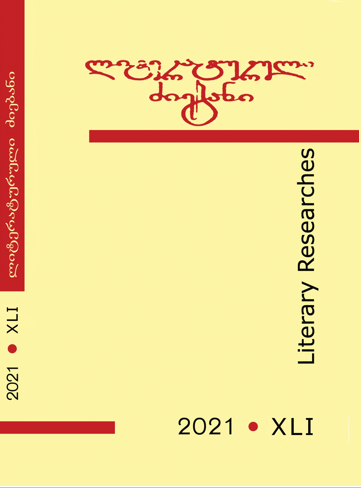Published 2021-12-20
How to Cite
Abstract
The moment admirers of Roman and Russian poetry lay their eyes on Gabriel Jabushanuri’s Invective-Monument, published by Zviad Gamsakhurdia in a dissenting magazine during the Soviet years, they will know they are dealing with a monument, a monument not of stone, but of verse, of poetry. The poem was the author’s celebration of the leader that intended not to glorify, but rather commemorate the evil to remember him with. In an age when poetry teemed with odes to Stalin, when the leader had replaced God and art and literature tried to formalize the equation, it was little less than a heroic act to create a narrative than ran contrary to the trend. Gabriel Jabushanuri managed to clash with and surmount the stream of exaltations in literature. He replaced a praise with a curse and produced The Curse of Curses, an inverted variant of The Song of Songs. In his poem the writer frequently makes use of the biblical snake, a metaphorized image of the leader. The snake is a creature that caused the downfall of the man and his damnation by God. On the other hand, while comparing the leader’s hair to snakes, the poet also wishes the reader to picture Medusa, who, when looked upon, brought about the man’s physical destruction. Another recurring image is ‘the stable’, alluding to the Augean stables to be cleared from corruption. The article analyses several biblical and mythological metaphors which, when decoded, would create appropriate images in the reader’s mind and make it possible to grasp the essence of Invective-Monument.

